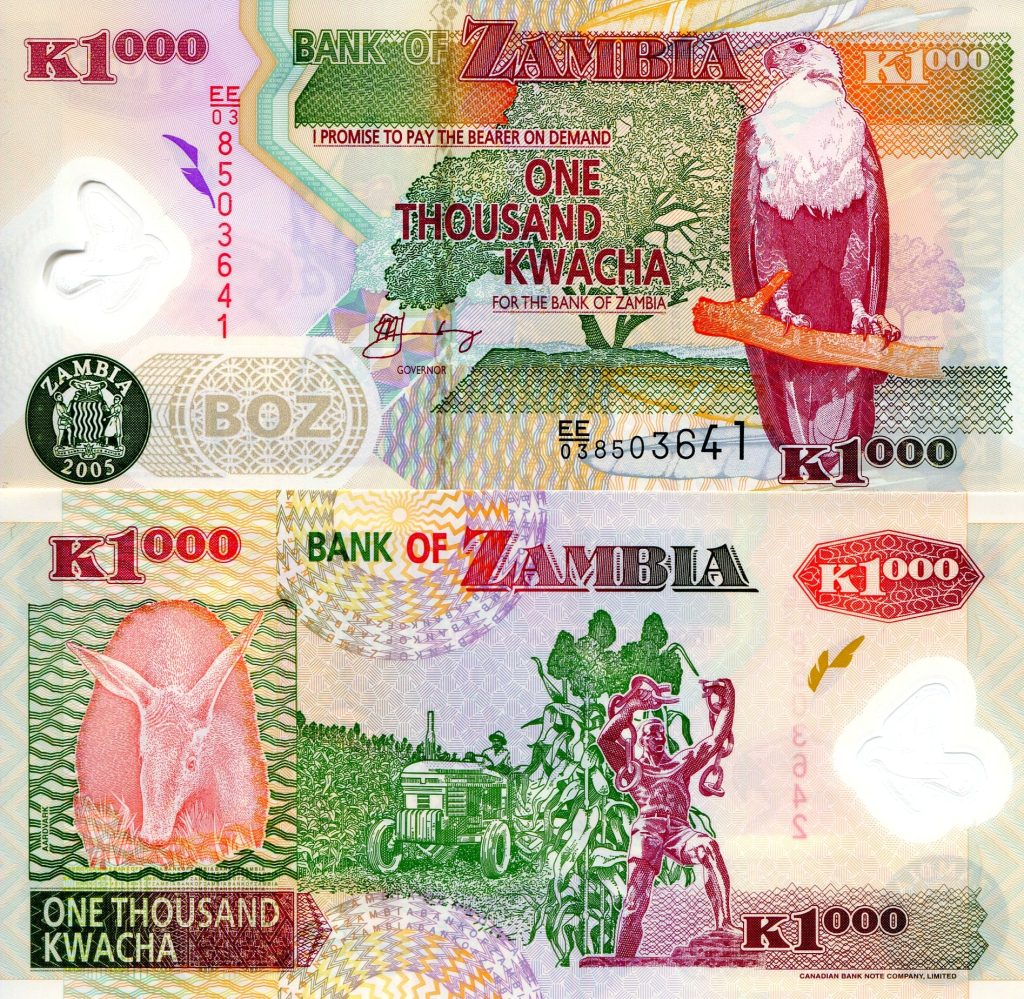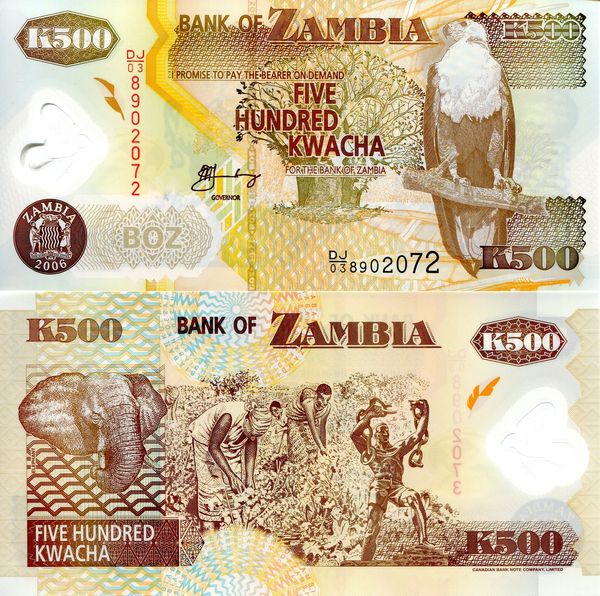THE PERIOD WHEN ZAMBIA INTRODUCED POLYMER BANK NOTES
In the year 2003, Zambia became the first country in Africa to issue polymer bank notes. The main reason presented for the introduction of the polymer bank notes was that they would be more durable than the paper bank notes. During this time, the 500 Kwacha note and the 1000 Kwacha note were the most utilised notes by the people when carrying out day to day transactions and so these two notes were chosen for the polymer notes project.
In order to avoid confusion, the look of the notes in terms of colour was kept the same as the paper notes which they were replacing. The contract to print the notes was won by the Canadian Banknote Company and so they were responsible for printing the new 500 Kwacha and 1000 Kwacha polymer notes. With great fanfare, the Bank of Zambia launched the new notes in September 2003. However due to some problems with some of the bank notes caused by the printing company, there was a recommencement of the distribution of the polymer notes. The recommencement was done in November 2003 and the new polymer bank notes went out to the people.

Warnings were issued by the Bank of Zambia to the general public to ensure that people wouldn’t subject the new polymer notes to experiments. The general public was warned that their curiosity should not lead them to start doing things such as pouring liquids on the notes or setting the notes on fire just for them to see what happens when they do so.
The 500 Kwacha note was colour brown in order to keep the colour of the paper version. The note had a number of culturally significant features. At the front of the 500 Kwacha note there was a fish eagle perched on a tree branch (the fish eagle is Zambia’s national bird). Also on the front there was a picture of a Baobab tree (a tree that is native to Zambia and some other African countries). At the back of the 500 Kwacha note there was a picture of people picking cotton which symbolized hardwork and also an image of the freedom statue which symbolized Zambia’s independence struggle. Also on the back of the note there was a picture of the head of an elephant which was a tribute to Zambia’s wildlife.
The 1000 Kwacha note retained the bright green and red colours which were on the paper version. On the front of the note featured a Jacaranda tree (which happens to be a tree widely planted on the sides of many Zambian roads). Also on the front there was a fish eagle perched on a tree branch. At the back of the 1000 Kwacha note was a picture of sorghum farming and next to that there was an image of the freedom statue. The back of the bank note also had a picture of an Aardvak on the left side (an Aardvak is a unique animal found in Zambia and some other African countries).
One very distinctive feature which appeared on both notes was a dove in flight which formed a see through window which is visible on both sides of the note. The dove is generally regarded as a symbol of peace.

Both notes also carried the national coat of arms on the bottom front. Alongside the serial numbers written across the front of the notes there were also many other intricate security marks. The notes also featured the signature of the then Bank of Zambia governor Dr Caleb Fundanga.
In 2012, the Kwacha rebasing programme was initiated and these two polymer notes were phased out. The 1000 Kwacha note was replaced by a 1 Kwacha coin and the 500 Kwacha note was replaced by the 50 Ngwee coin.
The polymer notes are no longer in usage and have now memerely remained as a memory of history. Those who used them have their own unique memories of when they used these notes and the things they bought with these notes. Some people still keep the polymer notes as memorabilia.
(@Connected to History)
#Zambia
#Kwacha
#ConnectedtoHistory